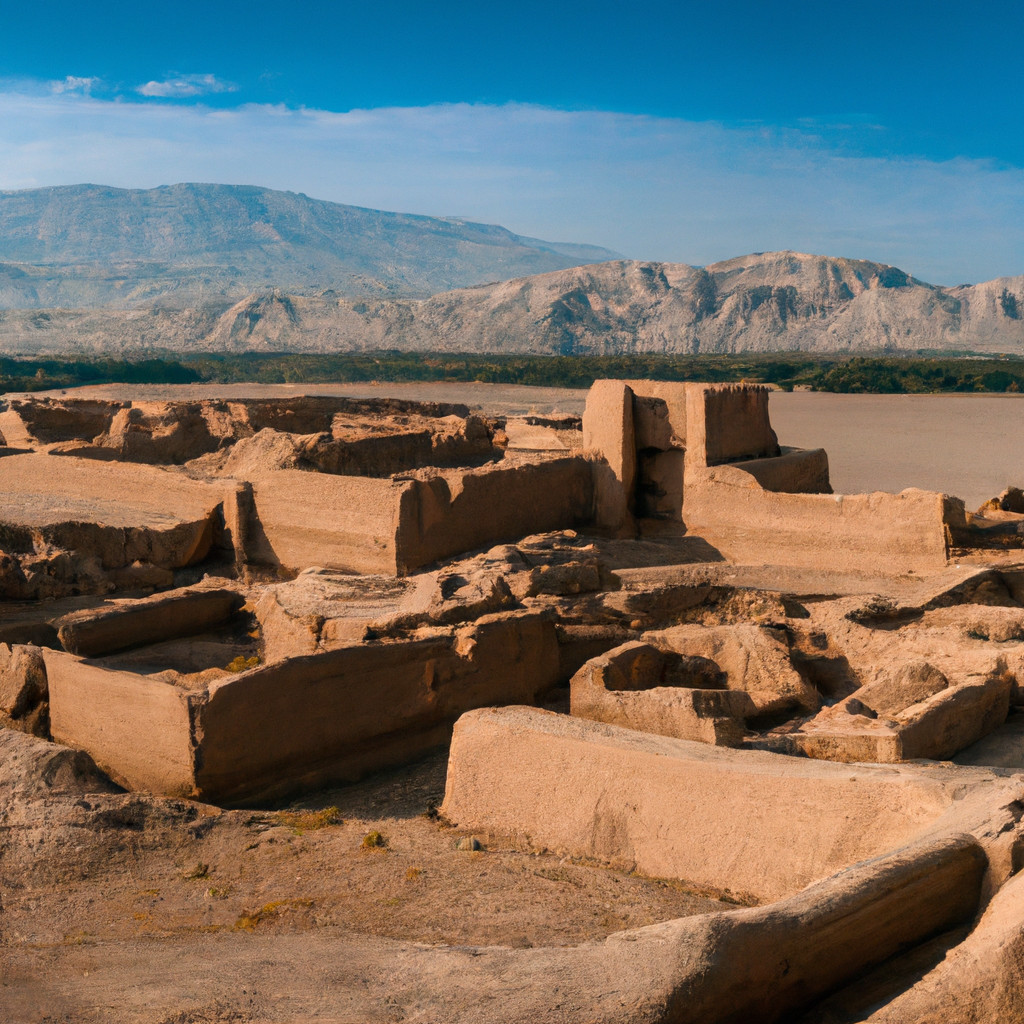Ancient city of Bost in Lashkargah is one of many fascinating sites that both foreign visitors and local tourists can explore while they visit Afghanistan and explore the Helmand Province. This historic city provides a peek into the ancient times of Afghanistan. Known for its grand architecture, ancient ruins, and a rich history that dates back to 500 B.C, it’s a testament to the resilience and artistry of the ancient civilizations that once thrived in the region. Taking a stroll through the city is not just a simple walk but rather a journey back to the forgotten days of glory, grandeur, and fascinating cultural history.
Ancient city of Bost Most Important Events
- The Conquest by Arabs: The ancient city of Bost witnessed a significant turning point in history when it was conquered by the Arab Rashidun Caliphate in the year 663 A.D. This marked the advent of Islam in the region and had a lasting impact on its culture and society.
- The Siege of Alexander the Great: Another major event in the history of Bost was the siege by Alexander the Great in his massive Asian campaign. The city’s strategic location made it a key point in his military maneuvers, shaping its history and legacy.
- The Cultural Renaissance under the Ghaznavids: The city of Bost experienced a significant cultural renaissance during the Ghaznavid dynasty. It was during this time that many architectural wonders of the city were built, adding to the city’s rich heritage.
History of Ancient city of Bost in Lashkargah
The ancient city of Bost finds its origins in the 6th century B.C. It was the largest city in the region and was famous for its exceptional setting on the banks of the Helmand River. Its ideal location, fertile lands, and strategic position led to its growth as an important center of trade. In centuries that followed, the city started to build a reputation as a hub of culture and knowledge.
The city’s golden age came under the Ghaznavid Empire in the 11th century. The Ghaznavids were captivated by the city’s charm and natural beauty and made elaborate investments in building monumental structures, most prominently, the Bost Arch, the majestic gateway to the city. The city’s already rich architectural heritage was further enhanced under the Ghaznavid rule.
However, the city also saw its share of destruction, particularly during the invasion of Mongols in the 13th century. The ruthless invaders levelled many of its remarkable architectural masterpieces. Despite the ravages of time and invasions, the ancient city of Bost holds firm, surviving as a symbol of Afghanistan’s rich cultural past and resilience.
Why It’s Important to Afghan History
The Ancient city of Bost holds a special place in Afghan history, as it was one of the key centers of trade, heritage, and culture. Its strategic location ensured it was at the crossroads of major trade routes, contributing significantly to Afghanistan’s economic growth. Moreover, it was also a confluence point of various cultures, which has significantly influenced Afghan history, traditions and society.
Moreover, Bost’s rich architectural heritage provides an insight into the artistic prowess of ancient Afghan societies. The architectural designs and relics found here bear testimony to the technological advancements, artistic creativity, and sublime aesthetics of the various dynasties that ruled the land. These historical sites are crucial in understanding the evolution of Afghan history and culture.
Why to Visit Ancient city of Bost
The ancient city of Bost is unique and offers an alluring mix of history, culture, and beauty. Visitors can marvel at the architectural grandeur of Bost Arch, stroll through its historical sites, explore the local food scene, and soak in the mesmerizing views of the Helmand River. The city offers a great blend of rich cultural experiences along with a warm local reception.
- Experience the historic Bost Arch
- Soak in the sights of the Helmand River
- Explore ancient ruins
- Discover local markets and traditional wares
- Savor local Afghan cuisine
Bost is located in the Lashkargah city of Helmand province and is easily accessible via road. The best time to visit Bost is during the spring (March to May) and autumn (September to November) when the weather is mild and pleasant.
Cultural & Tourist Significance
Bost, being a cultural treasure trove and historical site, has tremendous cultural and tourist significance. Its intricate architecture, historical landmarks, and the charm of ancient ruins not only attract history buffs but also set the pulse racing for photography enthusiasts.
The city also bears testament to the successful blending of multiple cultural influences, ranging from the traditional Buddhist culture to Islamic culture. This harmonious fusion is one of the city’s many highlights, drawing millions of tourists annually.
The site, being a symbol of Afghan resilience, also serves as a source of national pride. Visitors to Bost are offered a glimpse into Afghanistan’s vibrant past, giving them a deeper understanding of the country’s rich history and cultural heritage.
Interesting Facts
There’s an aura of mystery surrounding the city of Bost, and it’s home to some surprising facts. For instance, Bost was once known as Zarang, signifying its importance in the wine industry. Vineyards were so extensive that its wine was exported all across the Persian Empire.
Another lesser-known fact about Bost is that it served as the winter capital during the Ghaznavid reign. Its pleasant climate and strategic location made it an ideal winter retreat.
Woven within the city’s history are also countless fascinating legends. One such tale is of a secret tunnel originating under the Bost Arch leading to a distant mountain, used as an escape route during wars. While its existence remains a myth, the story adds to the city’s intrigue and charm.
With its majestic architecture, rich history, and cultural heritage, it’s no wonder that the ancient city of Bost is an irresistible destination for history buffs, culture aficionados, and travelers alike. Amid the passages of history and time-worn structures, Bost continues its timeless tale, waiting for explorers to discover and appreciate its beauty and antiquity.


